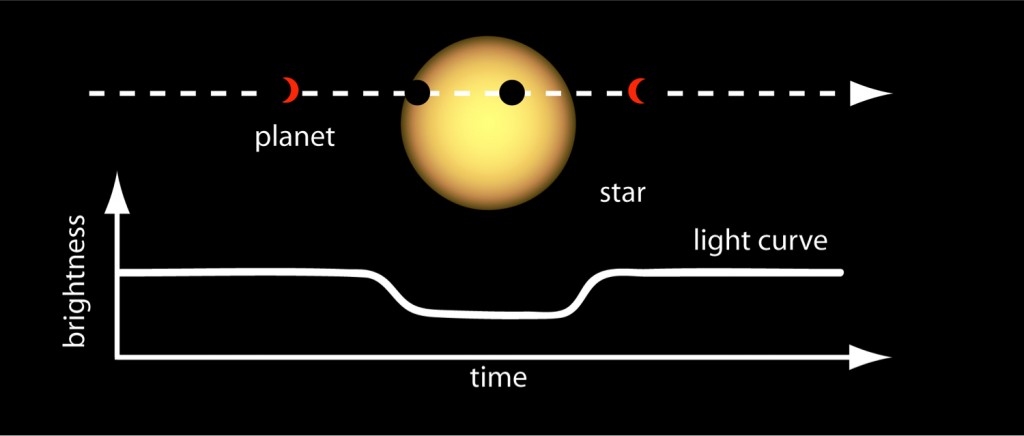Detecting Exoplanets
A rapidly shifting observational field in astronomy is the study of exoplanets, or planets outside of our solar system. Exoplanets can be detected through a number of methods, all of which provide a piece of information about that planet. Kepler and K2, for example, find exoplanets by taking a series of photometric images of the star and recording the brightness for a period of time, called the light curve. When a planet crosses over the host star, a portion of that star’s light is blocked, and we see a dip in the light curve. Analyzing the shape of the dip provides the radius and orbital period of the exoplanet. Precise astrometry takes images of a star system over time and searches for wobbles in the star’s position that can be attributed to a planet’s gravity tugging on the star. In this case, the star and planet’s orbit is in a plane orthogonal to Earth.

G-CLEF, like Kepler/K2, detects transiting exoplanets, or planets orbit fully or partially across the host star relative to Earth. Instead of measuring the change in brightness due to the transiting planet, G-CLEF measures the changes in a star’s radial velocity. A star with an orbiting planet will have a small orbit around the system’s center of mass in response to the planet’s gravity. This causes small variations in the star’s speed as seen from Earth, the radial velocity, as the star moves closer and farther away from us in its orbit. Radial velocity instruments like HARPS-N, ESPRESSO, and G-CLEF measure the Doppler shifts from this orbital wobble. The planet’s mass and orbit eccentricity can be determined from the radial velocities measured over time.

G-CLEF Exoplanet Studies
The science objectives for G-CLEF in performing studies of exoplanets are:
- Measure radial velocities to sub-meter precision, and in the best observing conditions down to 10 cm/s
- Identify exoplanets with significant atmospheres
- Discover biomarkers in the atmospheres of exoplanets
- Understand energy transport in giant exoplanet atmospheres
- Measure exoplanet atmosphere vertical temperature profiles
- Determine atomic and molecular composition of exoplanet atmospheres
